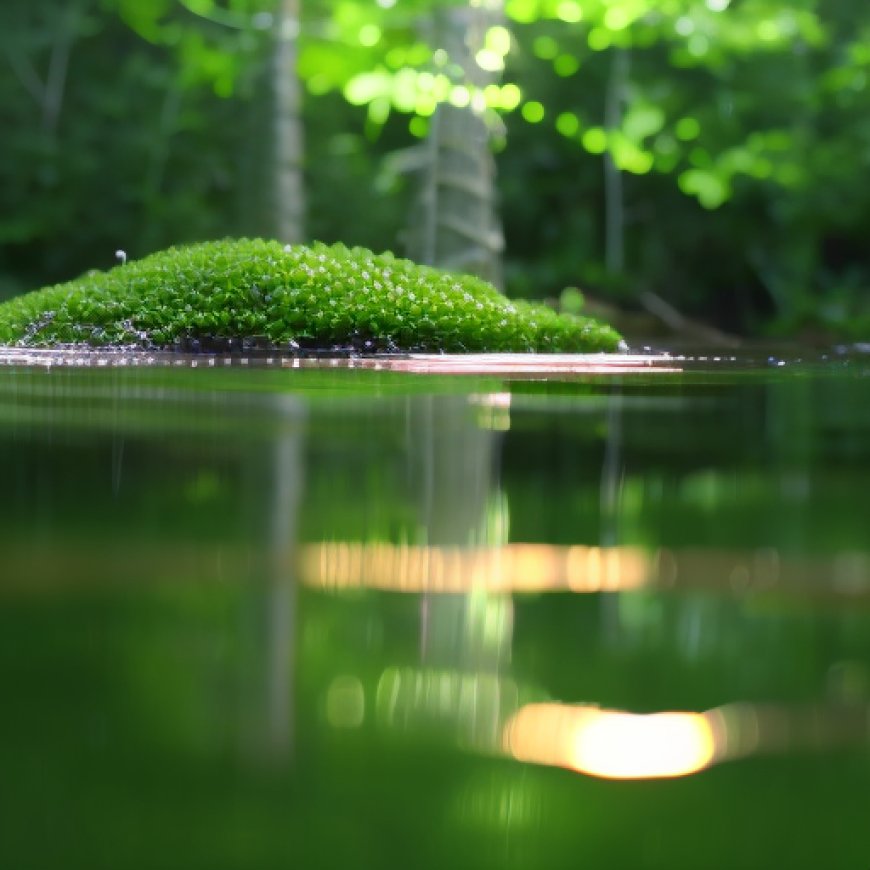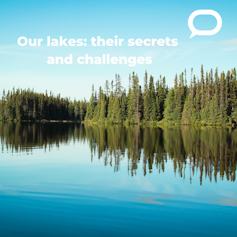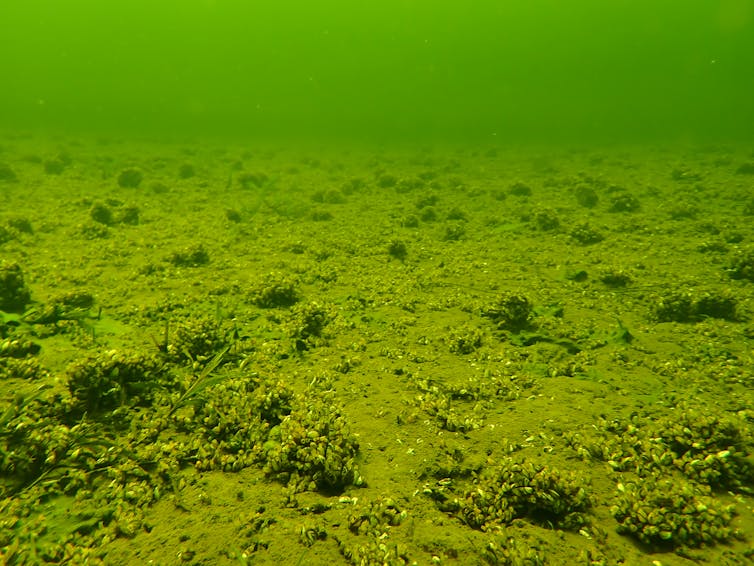Invasive species are reshaping aquatic ecosystems, one lake at a time


Freshwater Ecosystems Under Threat from Invasive Species
Freshwater ecosystems in Canada and around the world are under siege. Lakes, rivers, ponds, and wetlands face numerous environmental threats, with one of the most significant being the spread of invasive non-native species.
Outbreaks of Invasive Species in Canadian Lakes
In recent years, there have been numerous outbreaks of invasive species in Canadian lakes. Zebra mussels continue to spread in Québec and Manitoba. Chinese mystery snails are increasingly found in lakes in eastern Canada. Eurasian watermilfoil has spread to the maritime provinces. Goldfish have become superabundant in small lakes and ponds throughout the country.
These outbreaks are not isolated cases but rather symptoms of a global change.

This article is part of our series Our lakes: their secrets and challenges. This summer, The Conversation and La Conversation invite you to take a fascinating dip in our lakes. With magnifying glasses, microscopes, and diving goggles, our scientists scrutinize the biodiversity of our lakes and the processes that unfold in them, and tell us about the challenges they face. Don’t miss our articles on these incredibly rich bodies of water!
Rising Invasion Rates
Species are now spreading beyond their historical ranges faster, farther, and in greater numbers than ever before, thanks to human assistance. Freshwater ecosystems are highly prone to invasion and susceptible to human disturbances. Most non-native species are introduced through human activities or infrastructure, such as ballast water release from cargo ships in the Great Lakes.
Other factors that facilitate the spread of species into lakes include canals, fish stocking, bait bucket dumping, recreational boating, and the release of aquarium pets.
The release of aquarium pets, in particular, has led to the introduction of thousands of fish into lakes and rivers annually.
Highly Vulnerable Ecosystems
Lakes, rivers, and wetlands make up about one percent of the Earth’s surface area but hold nearly 10 percent of all living species, including more than half of all known fish species. However, the diversity of these ecosystems is being eroded faster than that of terrestrial and coastal marine ecosystems, largely due to the impacts of invasive species.
Invasive species have been identified as the primary driver of declines in freshwater fishes in various ecosystems.
Read more: Our lakes are teeming with parasites. Why that’s good…and bad
Lakes are more sensitive to invasive species because they contain life that lacks adequate defenses against invaders. For example, non-native trout stocked in historically fish-less lakes have caused declines in native frogs that have not evolved to adapt to large aquatic predators. Similarly, zebra mussels overgrow and smother the shells of native freshwater mussels, which have no evolutionary experience with such fouling organisms.
Cascading Consequences
Aquatic invasive species pose threats to fisheries, water quality, local economies, and human health. The impacts can extend well beyond the invaded lake, leading to ecological disruptions and biodiversity loss. For example, the introduction of predatory peacock bass in Lake Gatun in Panama caused a decline in insect-eating fishes, resulting in an increase in the mosquito population and the risk of malaria to humans in the area.
The unauthorized introduction of lake trout in Yellowstone Lake in the United States altered the lake’s food web, leading to the decline of a native fish species that was a key food source for grizzly bears.

The invasion of the European spiny waterflea in the Great Lakes led to a decline in native algae-eating waterfleas, resulting in a bloom of phytoplankton and degraded water quality in Lake Mendota.
Invasive mussels in the lower Great Lakes caused drastic increases in water clarity, leading to excessive algae growth and the proliferation of botulism, which affected fish-eating birds.
Stemming Lake Invasions
The Kunming-Montréal global biodiversity framework recognizes the need to reduce invasion rates by 50 percent by 2030. Achieving this target requires new policies to control vectors such as the pet trade and responsible decisions regarding the disposal of live bait and aquarium pets. Inspections of boats and fishing gear for hitchhiking organisms, as well as reporting newly detected non-native species, are also crucial.
Stakeholder education and engagement are essential in reducing invasion rates. The cooperation of the public, scientists, industry, and government is necessary to reach the Kunming-Montréal target. The Great Lakes serve as an encouraging case study, as stakeholders have successfully developed and enforced regulations to control ballast water invasions, resulting in a reduction in invasion rates.
SDGs, Targets, and Indicators
-
SDG 14: Life Below Water
- Target 14.1: By 2025, prevent and significantly reduce marine pollution of all kinds, in particular from land-based activities, including marine debris and nutrient pollution.
- Target 14.2: By 2020, sustainably manage and protect marine and coastal ecosystems to avoid significant adverse impacts, including by strengthening their resilience, and take action for their restoration in order to achieve healthy and productive oceans.
- Target 14.4: By 2020, effectively regulate harvesting and end overfishing, illegal, unreported and unregulated fishing and destructive fishing practices and implement science-based management plans, in order to restore fish stocks in the shortest time feasible, at least to levels that can produce maximum sustainable yield as determined by their biological characteristics.
- Target 14.5: By 2020, conserve at least 10 percent of coastal and marine areas, consistent with national and international law and based on the best available scientific information.
-
SDG 15: Life on Land
- Target 15.1: By 2020, ensure the conservation, restoration and sustainable use of terrestrial and inland freshwater ecosystems and their services, in particular forests, wetlands, mountains and drylands, in line with obligations under international agreements.
- Target 15.5: Take urgent and significant action to reduce the degradation of natural habitats, halt the loss of biodiversity and, by 2020, protect and prevent the extinction of threatened species.
- Target 15.8: By 2020, introduce measures to prevent the introduction and significantly reduce the impact of invasive alien species on land and water ecosystems and control or eradicate the priority species.
Table: SDGs, Targets, and Indicators
| SDGs | Targets | Indicators |
|---|---|---|
| SDG 14: Life Below Water | Target 14.1: By 2025, prevent and significantly reduce marine pollution of all kinds, in particular from land-based activities, including marine debris and nutrient pollution. | No specific indicators mentioned in the article. |
| SDG 14: Life Below Water | Target 14.2: By 2020, sustainably manage and protect marine and coastal ecosystems to avoid significant adverse impacts, including by strengthening their resilience, and take action for their restoration in order to achieve healthy and productive oceans. | No specific indicators mentioned in the article. |
| SDG 14: Life Below Water | Target 14.4: By 2020, effectively regulate harvesting and end overfishing, illegal, unreported and unregulated fishing and destructive fishing practices and implement science-based management plans, in order to restore fish stocks in the shortest time feasible, at least to levels that can produce maximum sustainable yield as determined by their biological characteristics. | No specific indicators mentioned in the article. |
| SDG 14: Life Below Water | Target 14.5: By 2020, conserve at least 10 percent of coastal and marine areas, consistent with national and international law and based on the best available scientific information. | No specific indicators mentioned in the article. |
| SDG 15: Life on Land | Target 15.1: By 2020, ensure the conservation, restoration and sustainable use of terrestrial and inland freshwater ecosystems and their services, in particular forests, wetlands, mountains and drylands, in line with obligations under international agreements. | No specific indicators mentioned in the article. |
| SDG 15: Life on Land | Target 15.5: Take urgent and significant action to reduce the degradation of natural habitats, halt the loss of biodiversity and, by 2020, protect and prevent the extinction of threatened species. | No specific indicators mentioned in the article. |
| SDG 15: Life on Land | Target 15.8: By 2020, introduce measures to prevent the introduction and significantly reduce the impact of invasive alien species on land and water ecosystems and control or eradicate the priority species. | No specific indicators mentioned in the article. |
Based on the information provided in the article, there are no specific targets or indicators mentioned that can be directly linked to the SDGs and their corresponding targets. However, the issues discussed in the article are relevant to SDG 14 (Life Below Water) and SDG 15 (Life on Land), which focus on the conservation and sustainable use of marine and terrestrial ecosystems.
Source: theconversation.com









